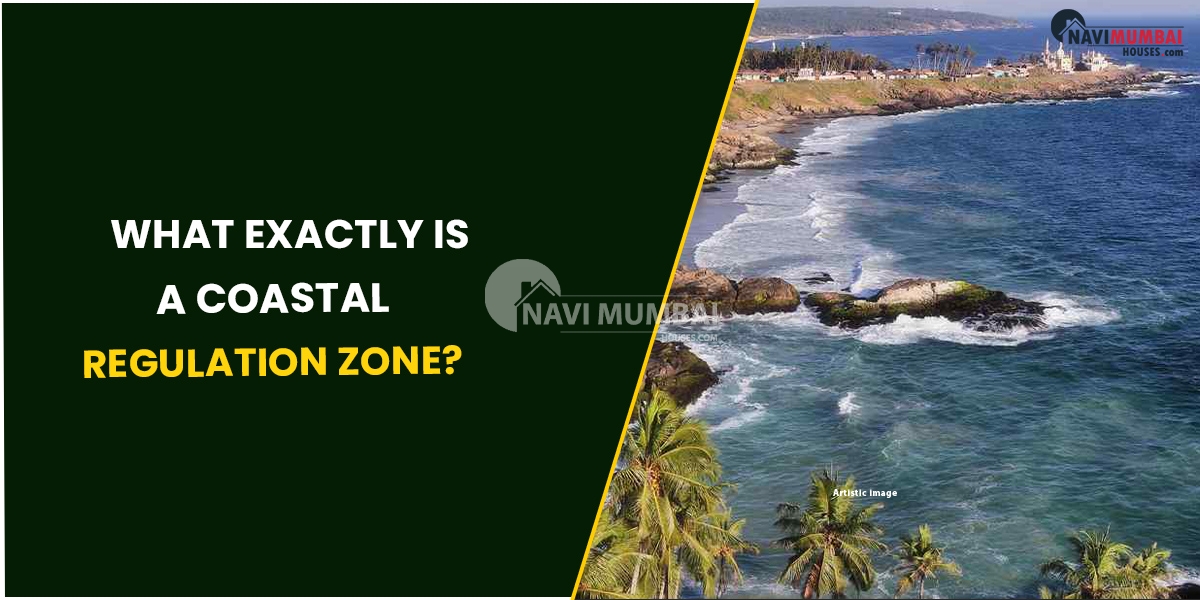
- November 11, 2022
- News
What Exactly Is A Coastal Regulation Zone?
Coastal Regulation Zone : Coastal Regulation Zones (CRZ) are areas along India’s 7,500-kilometer-long coastline. The Government of India regulates the construction of buildings, tourism infrastructure, and other facilities in these areas.
What exactly are coastal regulatory zones?
Coastal Regulation Zones are creeks, bays, seas, rivers, and backwaters that are affecte by tidal action up to 500 metres from the High Tide Line, as well as the land between the Low Tide Line and the High Tide Line (CRZ). The Ministry of Environment and Forests issued a notification in February 1991 under the Environment Protection Act of 1986 for the regulation of coastal area activities (MoEF).
This was the first time the Government of India notified Coastal Regulation Zones (CRZ). The notification divides coastal areas into four categories: CRZ-1, CRZ-2, CRZ-3, and CRZ-4.
Are you looking flat for sale in panvel?
What are the various kinds of Coastal Regulation Zones?
CRZ-1
These are ecologically sensitive areas that are critical to the survival of the coast’s ecosystem. National parks/marine parks, sanctuaries, reserve forests, wildlife habitats, mangroves, and corals/coral reefs are examples. These are the areas that are located between the high and low tide lines.
CRZ-2
This zone includes areas that have already developed up to the coast’s shoreline. Unauthorize structures are not permitted in this zone.
CRZ-3
CRZ-3 includes rural and urban areas that are relatively undisturbed and do not fall into the first two categories. Only agricultural activities and some public facilities are permitted in this zone. It includes undeveloped areas within municipal boundaries or in legally designated urban areas.
CRZ-4
Except for those designated as CRZ-I, CRZ-II, or CRZ-III, these areas include coastal stretches in Lakshadweep, the Andaman and Nicobar Islands, and a few other small islands. These areas are located in the aquatic region up to the territorial boundaries. This zone allows for activities such as fishing and other allied services. Solid waste disposal is prohibited on such property.
What exactly is the 2019 Coastal Regulation Zones Notification?
The 2019 coastal regulation zone notification replaced the 2011 notification. According to the most recent notification, the country’s coastal region should be develope in a sustainable manner, taking into account climate change and sea-level rise issues.
The 2019 notification divided CRZ-III areas (rural areas) into two categories: CRZ-IIIA and CRZ-IIIB, with the former denoting rural areas with a population density greater than 2161 people per square km and the latter denoting rural areas with a population density less than 2161 people per square km.
According to the most recent notification, the CRZ-IIIA areas will have a development zone (NDZ) of 50 metres from the high tide line (HTL), as opposed to the 200 metres specified in the 2011 notification.
The CRZ-IIIB areas, on the other hand, will have a no-development zone 200 metres from the HTL. The population density of each area will be calculate using Census 2011 data.
AFFORDABLE 2 BHK FLAT FOR RENT IN NAVI MUMBAI | 8433959100
You’re looking for Buy Home In Mumbai we have the Best Buy Properties In Mumbai Like Ready to Move & Nearby possession: https://navimumbaihouses.com/property/search/buy/mumbai-all/
If you want daily property update details please follow us on Facebook Page / YouTube Channel / Twitter






